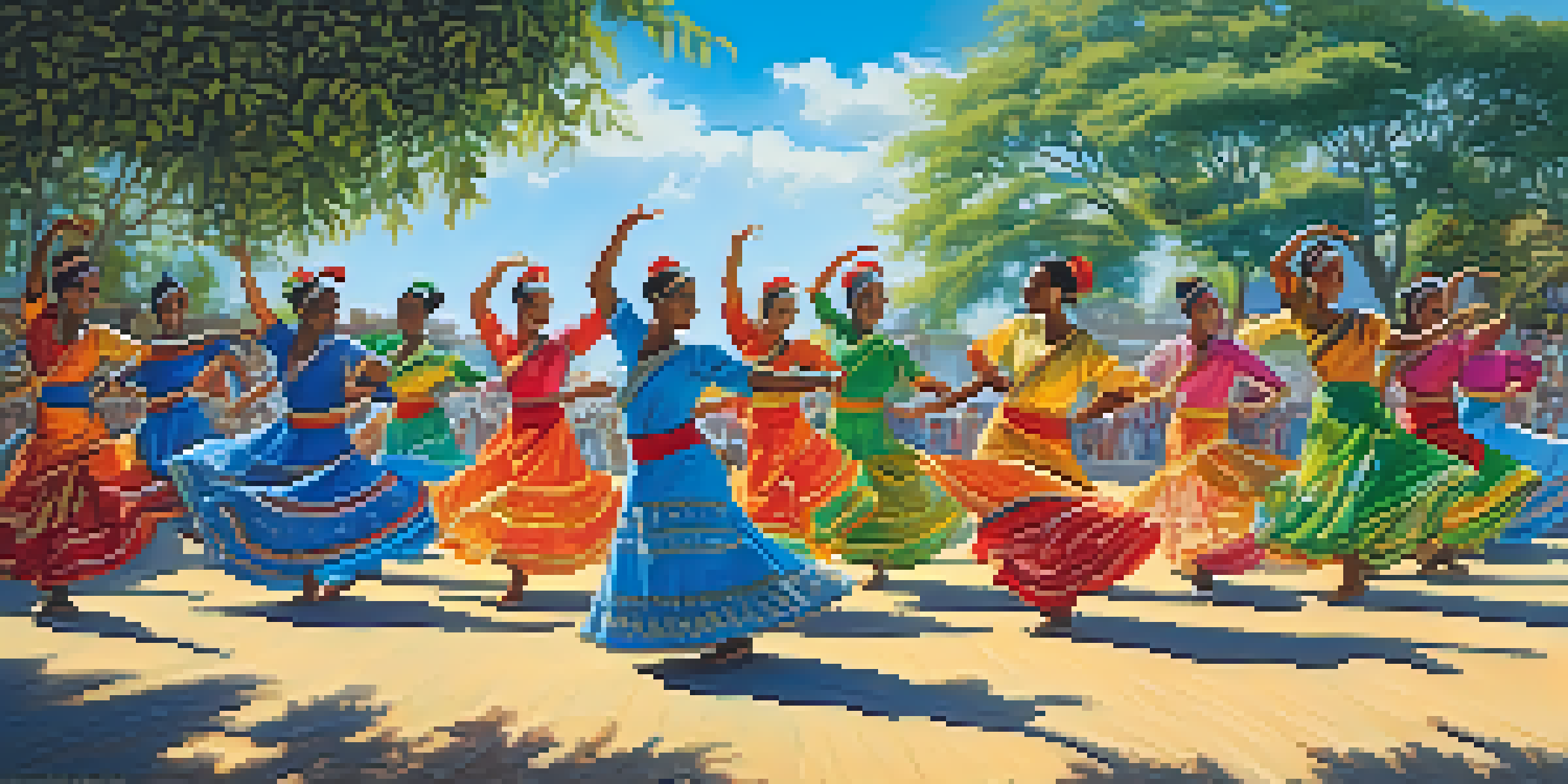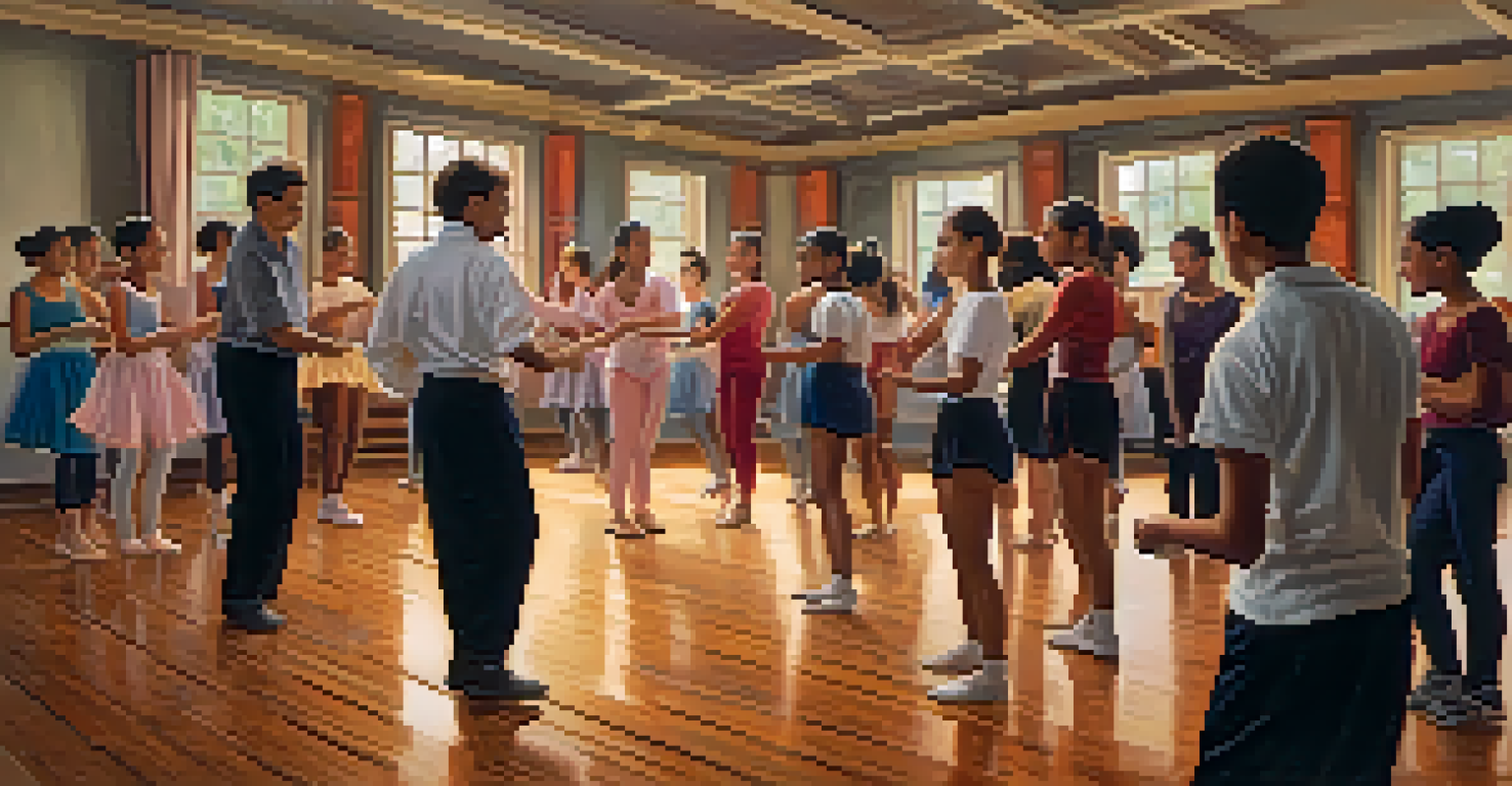The Impact of Cultural Appropriation on Dance Communities

Defining Cultural Appropriation in Dance
Cultural appropriation occurs when individuals adopt elements from a culture, often without understanding or respecting its significance. In the dance world, this can manifest when dancers borrow styles or moves from cultures that are not their own. It's essential to recognize that these borrowed elements often carry deep cultural meanings and histories.
Cultural appropriation is the adoption of elements of one culture by members of another culture. It is often discussed in a negative context, particularly when the appropriating culture is a dominant one and the appropriated culture is marginalized.
For instance, hip-hop and salsa are not just dance forms; they represent rich cultural narratives. When someone performs these dances without acknowledging their origins, it can dilute their meaning. This not only disrespects the culture but also overlooks the struggles and stories behind the dance.
Understanding cultural appropriation is crucial for dance communities to foster respect and appreciation. By acknowledging where styles come from, dancers can create a more inclusive environment that honors the roots of their art.
The Fine Line Between Appreciation and Appropriation
Appreciation and appropriation are often seen as two sides of the same coin, but they are fundamentally different. Appreciation involves a respectful engagement with another culture, often involving learning about its background and significance. In dance, this might mean taking classes from teachers who belong to that culture and understanding the context behind the movements.

Conversely, appropriation tends to disregard this context, leading to a superficial use of cultural elements. For example, a non-Latin dancer performing salsa at a competition without any understanding of its history might be seen as appropriating the culture. This lack of awareness can perpetuate stereotypes and lead to further marginalization of the original culture.
Cultural Appropriation Explained
Cultural appropriation in dance involves adopting styles without understanding their cultural significance, which can dilute their meaning.
By promoting appreciation over appropriation, dance communities can create spaces where cultural exchanges are enriching rather than exploitative. This shift encourages dancers to engage meaningfully with the cultures they admire, fostering a sense of unity and respect.
Consequences of Cultural Appropriation in Dance
The consequences of cultural appropriation in dance can be far-reaching, affecting both the original cultures and the dance community as a whole. When cultural elements are appropriated, it can lead to the commodification of a culture, reducing it to mere entertainment. This not only strips the culture of its significance but also alienates those who belong to it.
The aim of cultural exchange should be to enrich, not exploit; to honor, not appropriate.
Furthermore, dancers from marginalized cultures may feel that their heritage is being misrepresented or diluted. This can lead to feelings of frustration and anger, as their art forms are not given the respect they deserve. In turn, this creates a divide within dance communities, where some feel included while others feel excluded.
Addressing these consequences requires a collective effort to educate dancers about the importance of cultural sensitivity. By fostering open dialogues about these issues, dance communities can work towards a more harmonious and respectful coexistence.
The Role of Dance Educators in Cultural Sensitivity
Dance educators play a pivotal role in shaping how students understand and engage with different dance forms. By emphasizing the importance of cultural context and respect, they can help cultivate a more informed generation of dancers. This means not only teaching the moves but also sharing the stories behind them.
For example, a hip-hop instructor can explain the genre's roots in African American culture and its evolution over time. This kind of context enriches the learning experience and encourages students to appreciate the culture rather than appropriate it. Educators can also invite guest teachers from different cultures to provide firsthand insights, further enhancing the educational experience.
Appreciation vs. Appropriation
Distinguishing appreciation from appropriation is vital, as appreciation involves respectful engagement and understanding of cultural contexts.
Ultimately, dance educators have the power to instill values of respect and appreciation within their students. By fostering an environment where cultural sensitivity is prioritized, they contribute to building a dance community that honors its diverse roots.
Navigating Cultural Exchanges in Dance
Cultural exchanges can be a beautiful way to celebrate diversity in dance, but they must be approached thoughtfully. When sharing dance styles, it's essential to communicate openly about the origins and meanings of those styles. This fosters a sense of mutual respect and understanding among dancers from different backgrounds.
For instance, a collaborative dance project that includes dancers from various cultures can showcase the beauty of diversity while being mindful of appropriation. By highlighting the unique contributions of each culture, these exchanges can create a richer, more inclusive dance narrative. It's about finding common ground while respecting individual identities.
Navigating these cultural exchanges requires a commitment to learning and understanding. By prioritizing dialogue and respect, dance communities can create spaces where cultural sharing is celebrated rather than exploited.
The Importance of Inclusivity in Dance
Inclusivity in dance goes beyond simply allowing diverse dance styles; it means creating a welcoming environment for all dancers. This involves recognizing and valuing the contributions of dancers from various cultural backgrounds. A truly inclusive dance community celebrates differences while working towards unity.
When inclusivity is prioritized, it opens the door for innovative collaborations and richer storytelling through dance. Dancers can learn from one another, sharing their unique perspectives and experiences. This not only enhances the dance itself but also fosters a sense of belonging among all dancers.
Role of Educators in Sensitivity
Dance educators are crucial in fostering cultural sensitivity by teaching the history and context behind various dance forms.
Creating an inclusive dance community requires ongoing efforts to challenge biases and promote understanding. By actively engaging with dancers from different backgrounds, we can cultivate an environment where everyone feels valued and respected.
Moving Forward: Solutions for Dance Communities
As dance communities navigate the complexities of cultural appropriation, proactive solutions are essential for fostering respect and appreciation. One effective approach is to establish guidelines that encourage cultural sensitivity and respect. These guidelines can serve as a foundation for dancers to learn about and engage with different cultures responsibly.
Workshops and discussions on cultural awareness can also be beneficial, providing dancers with the tools they need to engage thoughtfully. By encouraging open conversations about cultural backgrounds and the significance of various dance styles, communities can promote understanding and respect. This educational approach can empower dancers to embrace cultural diversity without appropriating it.

Ultimately, the goal is to create a dance community where all cultures are respected and celebrated. By committing to education, open dialogue, and mutual respect, we can move towards a future that honors the rich tapestry of dance.